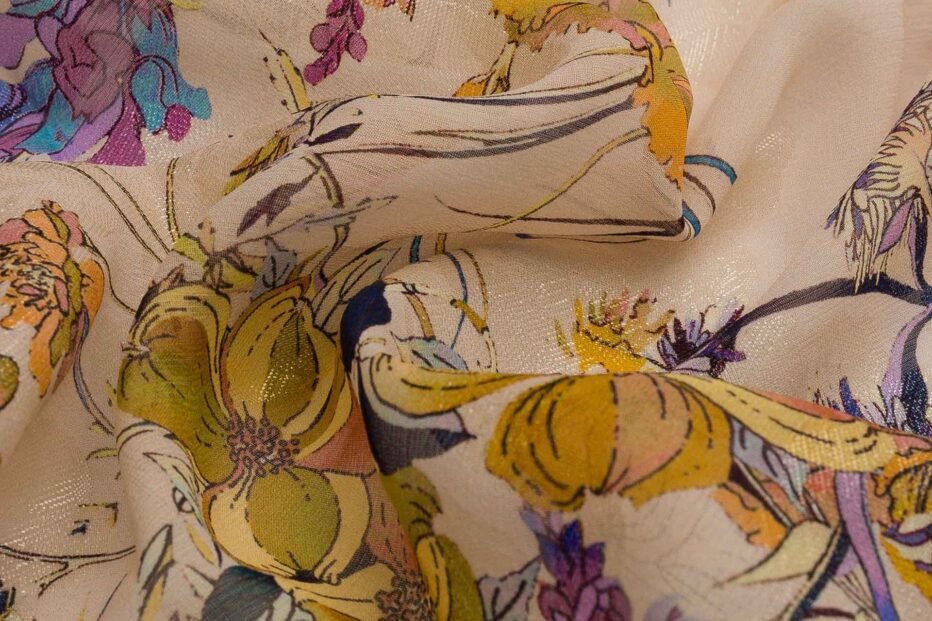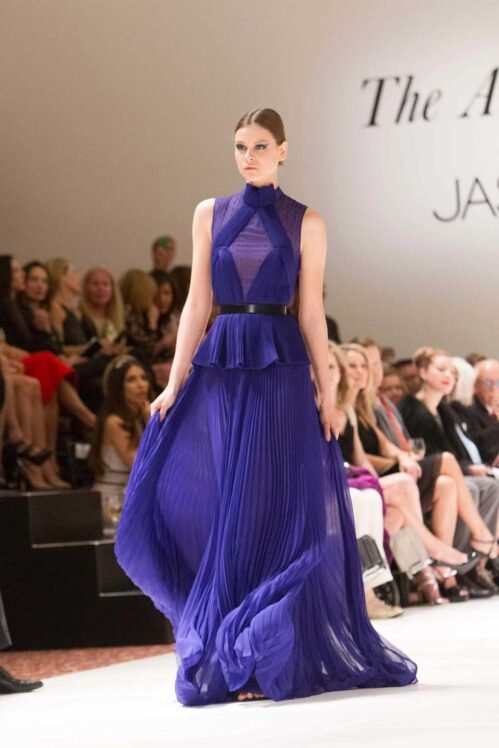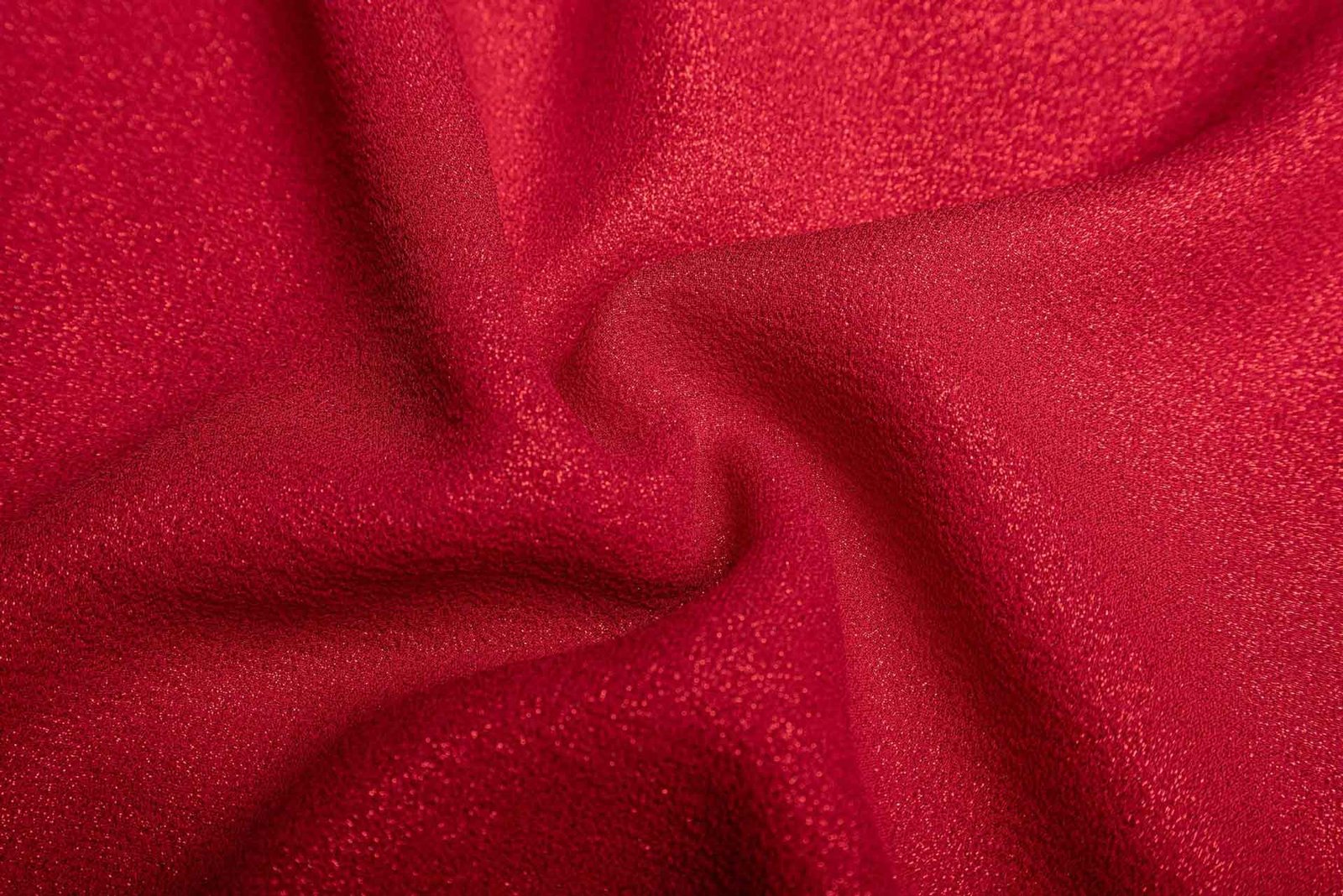From Bollywood to ball gowns, chiffon is a popular, decorative, lightweight fabric that was is associated with elegance and luxury. Chiffon’s shimmery and sheer appearance has proliferated in fashion and design for centuries.
Common Applications
Blouse, Scarves, Lingerie, Gowns, Bridalwear, Embroidery

Description
A sheer, slightly rough fabric often used to make elegant eveningwear.
Chiffon is a weaving process that produces a lightweight, plain weave fabric with a slight shine. The chiffon weave results in small puckers that make the fabric a little rough to the touch. These puckers are created through the use of s-twist and z-twist crepe yarns, which are twisted counter-clockwise and clockwise respectively. Crepe yarns are also twisted much tighter than standard yarns. The yarns are then woven in a plain weave, which means a single weft thread alternates over and under a single warp thread. The sheer fabric can be woven from a variety of textile types, both synthetic and natural, like silk, nylon, rayon, or polyester.
Background
Story
Chiffon is a weaving process that produces a lightweight, plain weave fabric with a slight shine. The chiffon weave results in small puckers that make the fabric a little rough to the touch. These puckers are created through the use of s-twist and z-twist crepe yarns, which are twisted counter-clockwise and clockwise respectively. Crepe yarns are also twisted much tighter than standard yarns. The yarns are then woven in a plain weave, which means a single weft thread alternates over and under a single warp thread. The sheer fabric can be woven from a variety of textile types, both synthetic and natural, like silk, nylon, rayon, or polyester.
Manufacturing
Chiffon fabric is made with different methods depending on the type of material that is used to weave this unique type of textile. The production of silk , for instance, involves the breeding of silkworms, the softening of cocoons, and the reeling of filaments. Polyester production, on the other hand, involves no organic components, and this fabric is made entirely from synthetic chemicals that are synthesized in a laboratory.

Expertises
Characteristic
- Sheer. Chiffon-fabric has a sheer, transparent appearance, and when held under a magnifying glass, it looks like a fine net or mesh.
- Rough feel. There are slight puckers in chiffon due to the alternating s-twist and z-twist yarns.
- Stretch. Chiffon has a slight spandex-like feel as a result of being woven in different directions. Silk chiffon has slightly more stretch than polyester chiffon, as silk is naturally more pliable.
- Strong. Chiffon fabric, both silk and synthetic, is extremely strong as a result of the twists of the yarns and the tight weave of the fabric.
- Shimmery. Chiffon has a shimmery surface. Silk chiffon has the most shimmer, while cotton chiffon is more matte.
Extra Long Staple
Supima from America, Sea Island cotton from the Caribbean, and Giza cotton from Egypt are cottons with the highest qualities. They are all extra-long staple and very soft to the touch.
Sustainable Options
Organic cotton and color cotton are some sustainable options that have been promoted to replace conventional cotton, with fewer synthetic agricultural chemicals and less water usage.
Application
The cotton yarn can be used for weaving and knitting. Cotton is the cooling fiber suitable to be used for making shirt, blouse, dress, T-shirt, Pants. Cotton also can be used for color dyed.
Social
12k followers
30k likes
Youtube
22k subscribers
8k followers
Have a project in mind?
If you have a great idea, reach out to me. Whether it is a small or big project, I will listen first and get back to you with a plan.

